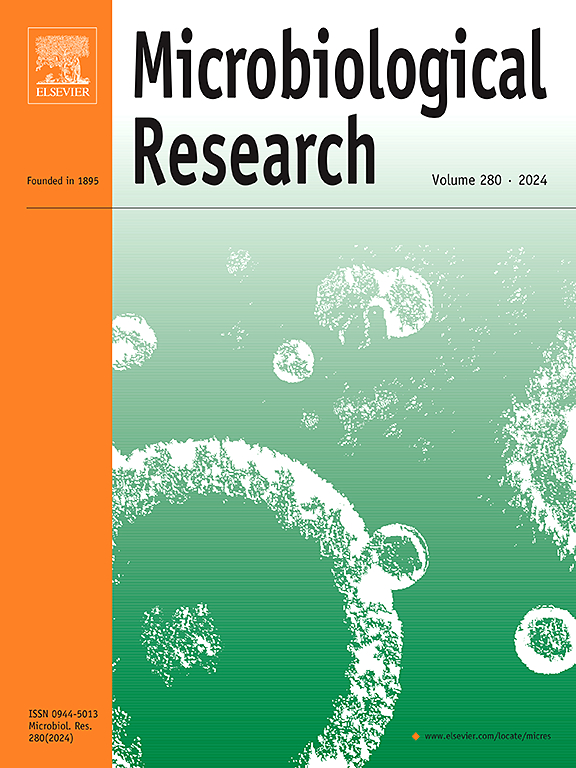Brassica microgreens shape gut microbiota and functional metabolite profiles in a species-related manner: A multi-omics approach following in vitro gastrointestinal digestion and large intestine fermentation
IF 6.9
1区 生物学
Q1 MICROBIOLOGY
引用次数: 0
Abstract
Brassicaceae microgreens constitute a novel and promising source of bioactive compounds, such as polyphenols and glucosinolates. In this work, an integrative computational approach was performed to decipher the interaction between bioaccessible microgreen metabolites and human gut bacteria. To this end, in vitro gastrointestinal digestion and large intestine fermentation were performed on eight different microgreens, which were further subjected to a dual high-throughput approach that combined fecal metagenomics and untargeted metabolomics. Data reveal a significant correlation between Parabacteroides merdae and two isothiocyanates in arugula fermentates, suggesting a high bioaccessibility of these bioactive compounds. Meanwhile, two species of Roseburia were correlated with pseudooxynicotine, an anti-inflammatory catabolite of nicotine in Brassica oleracea fermentates (such as broccoli, Brussels sprouts, and red cabbage), coupled with an increase in short-chain fatty acid production. These findings confer evidence on the nutritional impact of microgreens consumption, revealing the most bioaccessible metabolites with associated health-promoting properties together with their participation in the shaping of gut microbial populations, possibly leading to prebiotic effects.
微绿芸苔以物种相关的方式塑造肠道微生物群和功能代谢物谱:体外胃肠道消化和大肠发酵后的多组学方法
十字花科的微绿色植物是一种新的、有前景的生物活性化合物的来源,如多酚和硫代葡萄糖苷。在这项工作中,采用综合计算方法来破译生物可及微绿代谢物与人类肠道细菌之间的相互作用。为此,研究人员对8种不同的微蔬菜进行了体外胃肠道消化和大肠发酵,并进一步采用了粪便宏基因组学和非靶向代谢组学相结合的双高通量方法。数据显示,芝麻菜发酵液中的两种异硫氰酸酯与拟芽孢杆菌之间存在显著相关性,表明这些生物活性化合物具有较高的生物可及性。同时,两种Roseburia与伪烟碱相关,伪烟碱是甘蓝发酵液(如西兰花、球芽甘蓝和红甘蓝)中烟碱的一种抗炎分解代谢物,同时短链脂肪酸产量增加。这些发现为食用微蔬菜的营养影响提供了证据,揭示了最具生物可及性的代谢物,它们具有相关的健康促进特性,并参与塑造肠道微生物群,可能导致益生元效应。
本文章由计算机程序翻译,如有差异,请以英文原文为准。
求助全文
约1分钟内获得全文
求助全文
来源期刊

Microbiological research
生物-微生物学
CiteScore
10.90
自引率
6.00%
发文量
249
审稿时长
29 days
期刊介绍:
Microbiological Research is devoted to publishing reports on prokaryotic and eukaryotic microorganisms such as yeasts, fungi, bacteria, archaea, and protozoa. Research on interactions between pathogenic microorganisms and their environment or hosts are also covered.
 求助内容:
求助内容: 应助结果提醒方式:
应助结果提醒方式:


